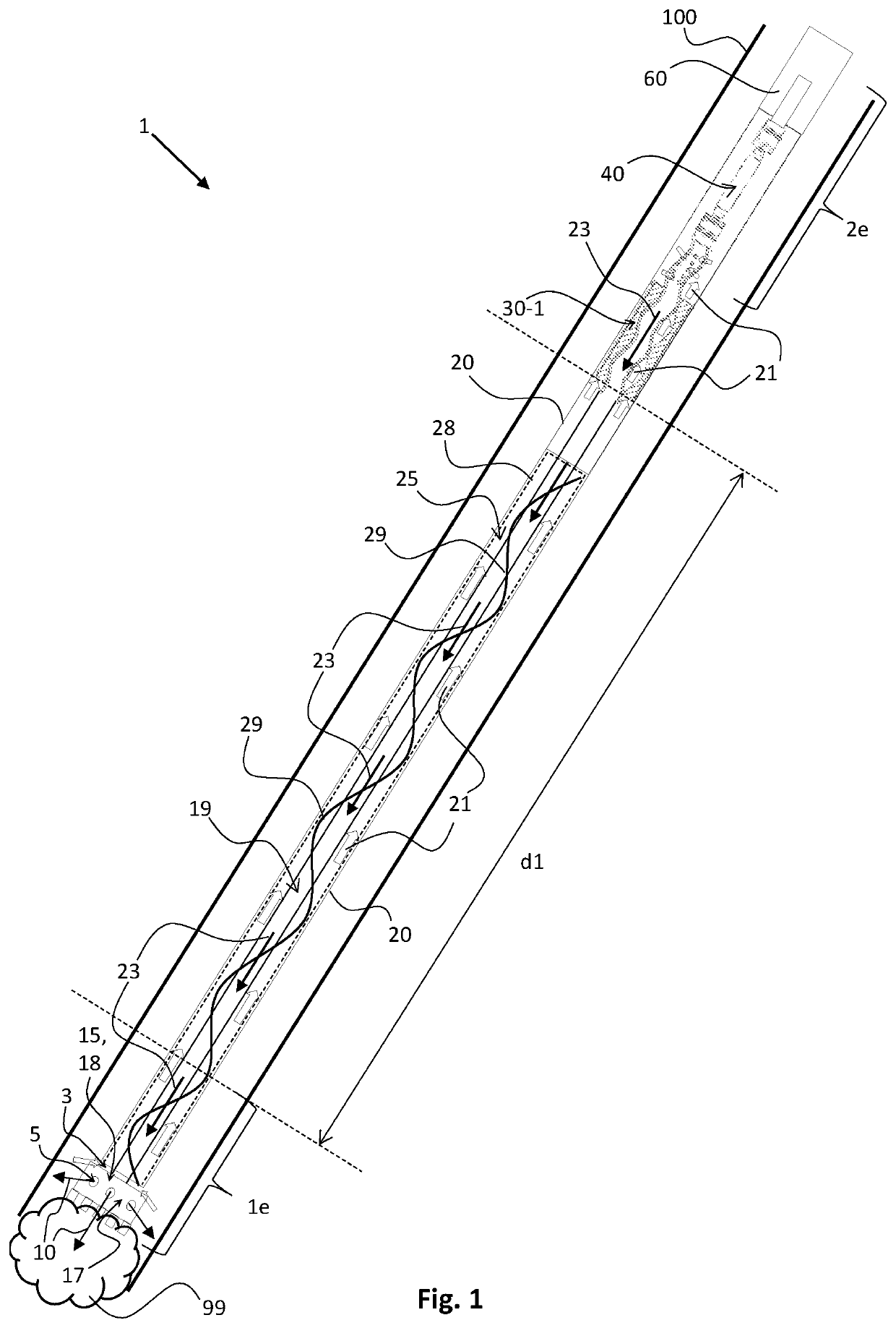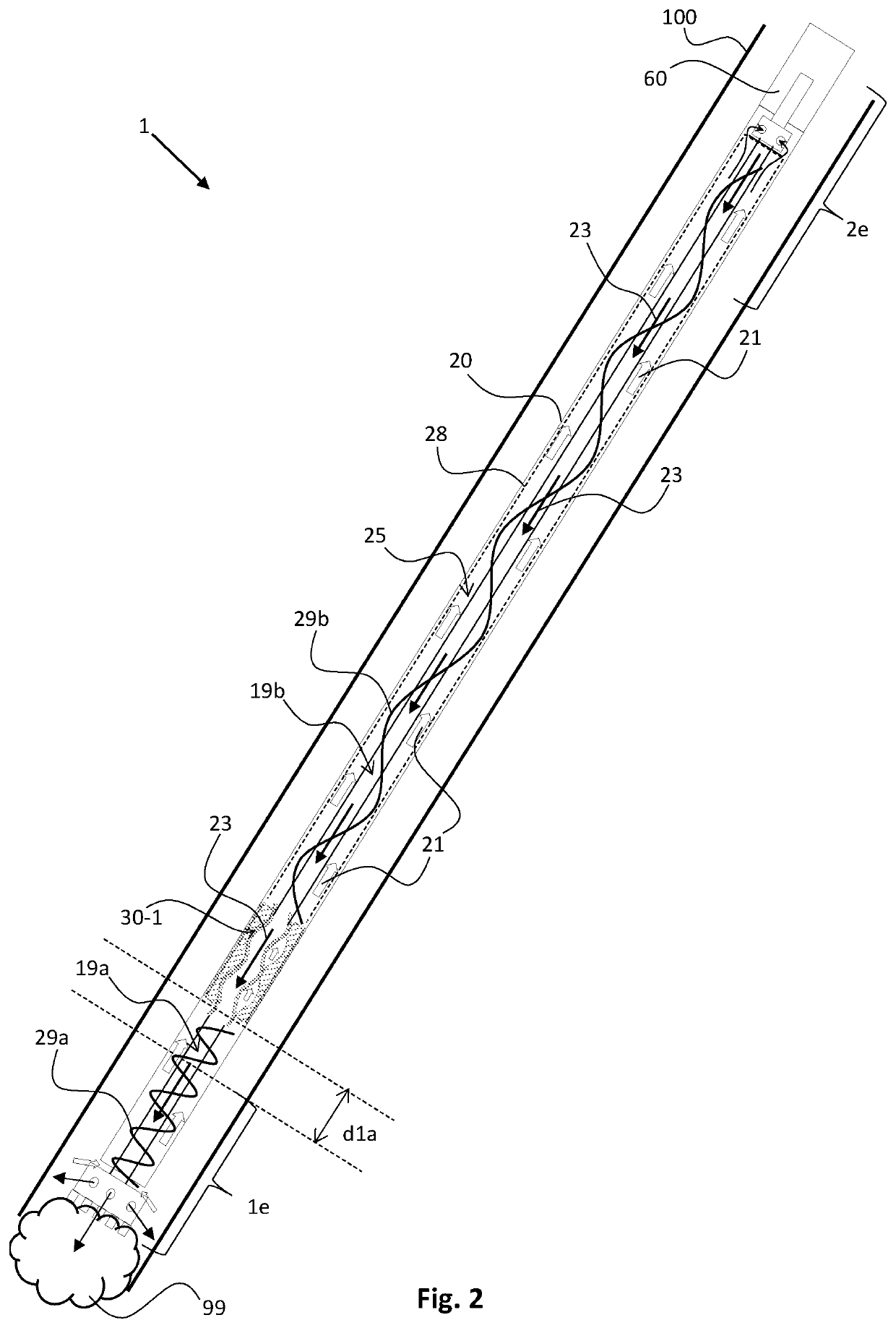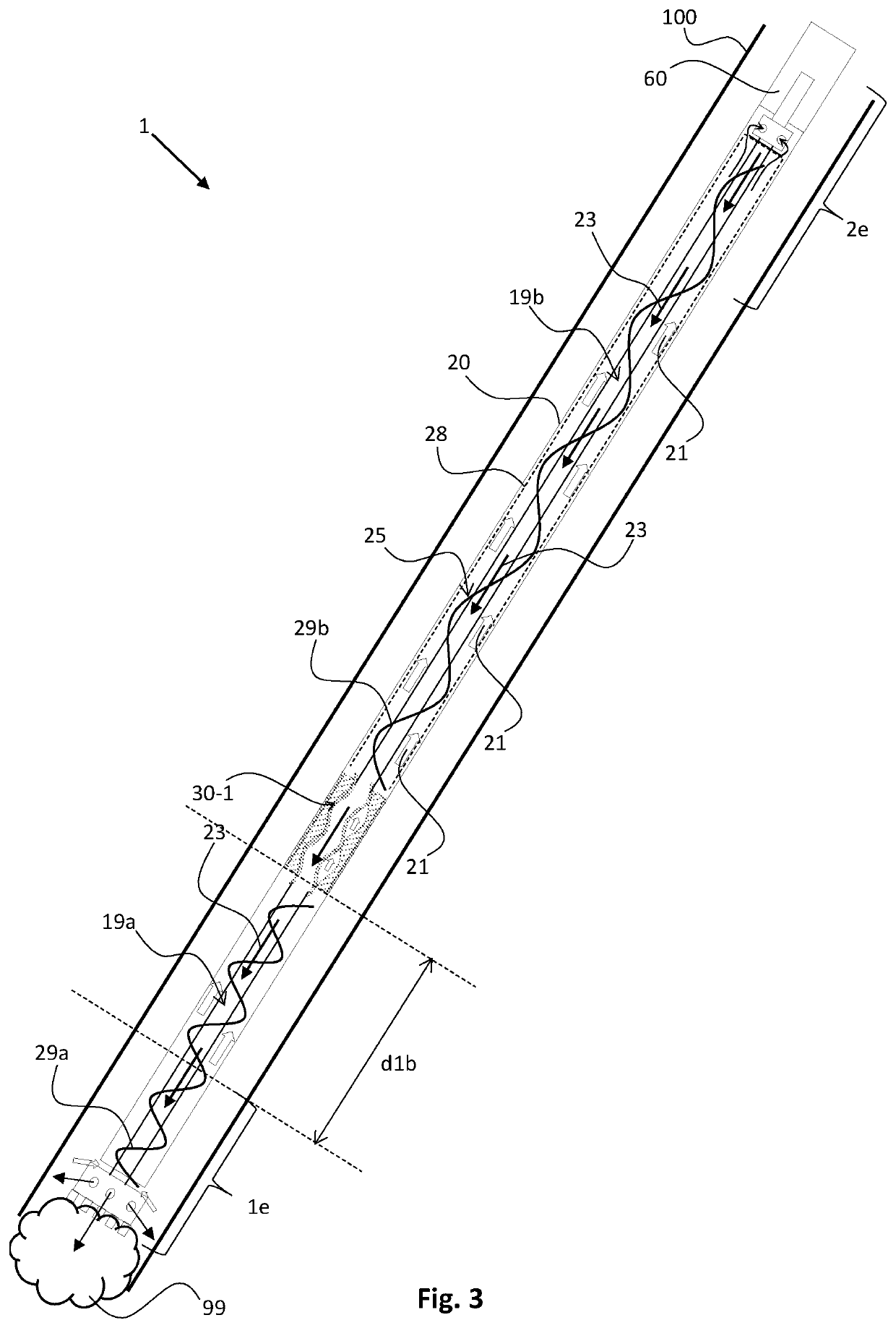Wireline Clean-Out Tool Having Improved Capacity
a technology of wireline and cleaning tool, which is applied in the direction of survey, borehole/well accessories, separation processes, etc., can solve the problems of difficult to collect large amounts of debris with electromechanical equipment, low torque of equipment, and volatile character of system
- Summary
- Abstract
- Description
- Claims
- Application Information
AI Technical Summary
Problems solved by technology
Method used
Image
Examples
first embodiment
[0046]FIG. 1 shows a wireline clean-out tool 1 in accordance with the invention. The wireline clean-out tool is provided in a wellbore 100, which is clogged with debris 99 as illustrated. The wellbore 100 may comprise a casing, a tubing, liner or another type of tubular structure. The tool 1 comprises a housing 20 and has a free-end portion le and an opposite end portion 2e at its other end as illustrated. At the opposite end portion 2e there is provided a rotation motor 60, which may be an electric rotation motor.
[0047]The rotation motor 60 drives a well-cleaning device 15 at the free-end portion 1e of the wireline clean-out tool 1. In order to make this happen the driving axle of the rotation motor 60 is mechanically coupled to a flex joint 40 as illustrated. The flex joint 40 on its turn is mechanically coupled to a progressive cavity pump 30, 30-1. The progressive cavity pump 30, 30-1 is mechanically coupled to a hollow rotatable shaft 19, which on its turn is mechanically conne...
fourth embodiment
[0055]FIG. 4 shows a wireline clean-out tool 1 in accordance with the invention. This embodiment will only be discussed in as far as it differs from the previous embodiments. A first major difference is that the wireline clean out tool 1 now comprises two progressive cavity pumps with a hollow rotor, a first one 30-1 provided at a first predefined distance d1 from the free-end portion 1e of the tool 1, and a second one 30-2 provided at a second predefined distance d2 further away from the free-end portion 1e of the tool 1. A second major difference is that the housing 20 comprises a porous wall 27, which has a double function in this embodiment.
[0056]The first function is the function of filter for the collection chamber 25. The first and lower progressive cavity pump 30-1 provides for the suction effect to take in the well fluid with debris at the free-end portion 1e of the tool 1 as illustrated by the hollow arrows. Once the well fluid has gone through the lower pump 1 it enters t...
fifth embodiment
[0060]FIG. 5 shows a wireline clean-out tool 1 in accordance with the invention. This embodiment will only be discussed in as far as it differs from the previous embodiment. A first major difference is the presence of two flex joints 40-1, 40-2 (Flex joint 40-2 is hollow). A first one 40-1 between the second and upper progressive cavity pump 30-2 and the rotation motor 60, and a second one 40-2 between the first and lower progressive cavity pump 30-1 and the well-cleaning device 15. As a consequence of the flex joints on both ends I e, 2e of the tool 1 there is now only one transport screw 29 shown in FIG. 5. But it must be noted that a transport screw (or transport blades) could also be implemented on a flex-joint.
[0061]FIG. 6 shows a progressive cavity pump 30, 30-1, 30-2 used in the wireline clean-out tool 1 in accordance with the invention. FIG. 7 shows a cross-sectional view of the progressive cavity pump 30, 30-1, 30-2 of FIG. 6. Progressive cavity pumps as such are known unit...
PUM
| Property | Measurement | Unit |
|---|---|---|
| length | aaaaa | aaaaa |
| distance | aaaaa | aaaaa |
| circumference | aaaaa | aaaaa |
Abstract
Description
Claims
Application Information
 Login to view more
Login to view more - R&D Engineer
- R&D Manager
- IP Professional
- Industry Leading Data Capabilities
- Powerful AI technology
- Patent DNA Extraction
Browse by: Latest US Patents, China's latest patents, Technical Efficacy Thesaurus, Application Domain, Technology Topic.
© 2024 PatSnap. All rights reserved.Legal|Privacy policy|Modern Slavery Act Transparency Statement|Sitemap



